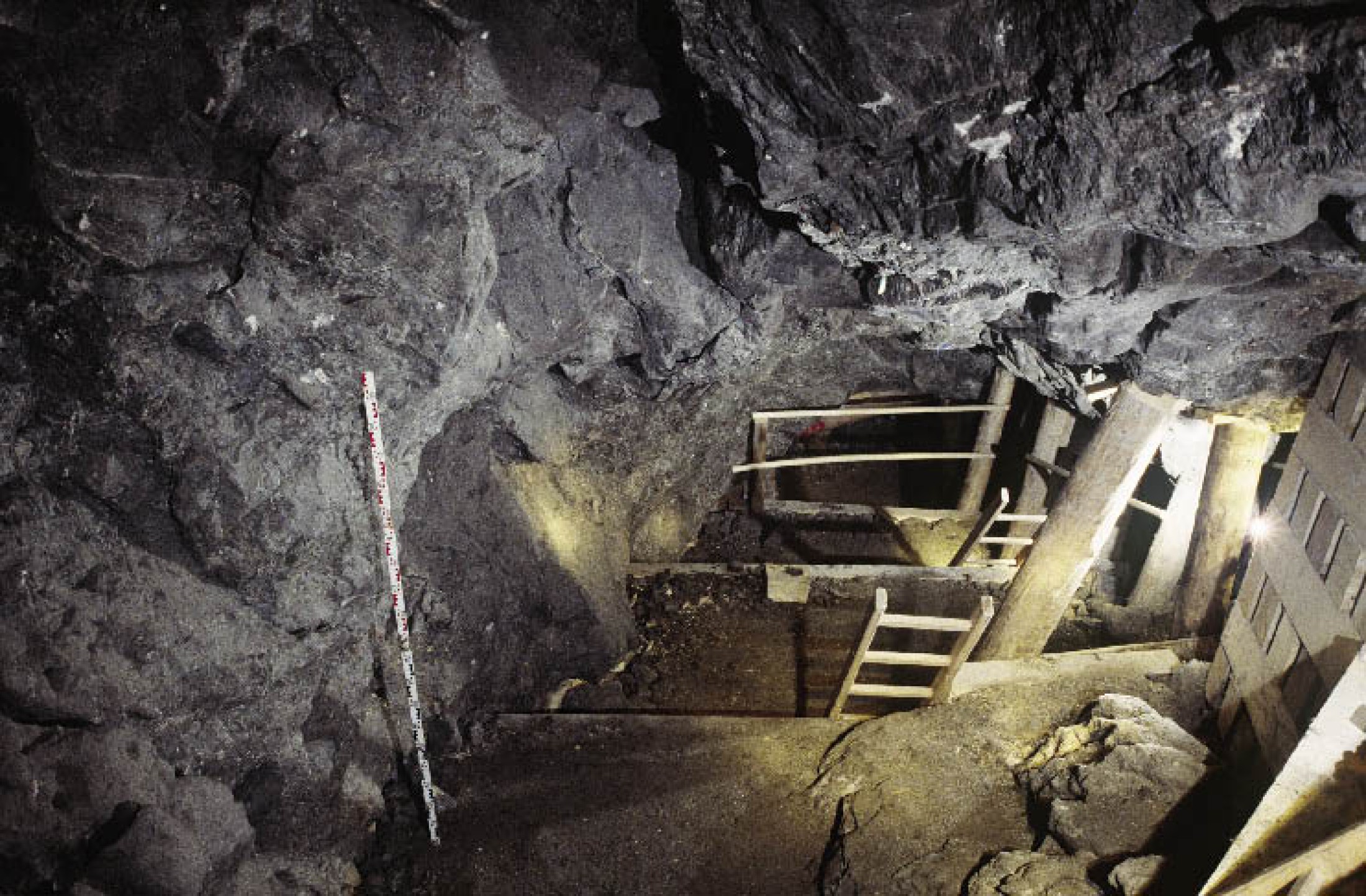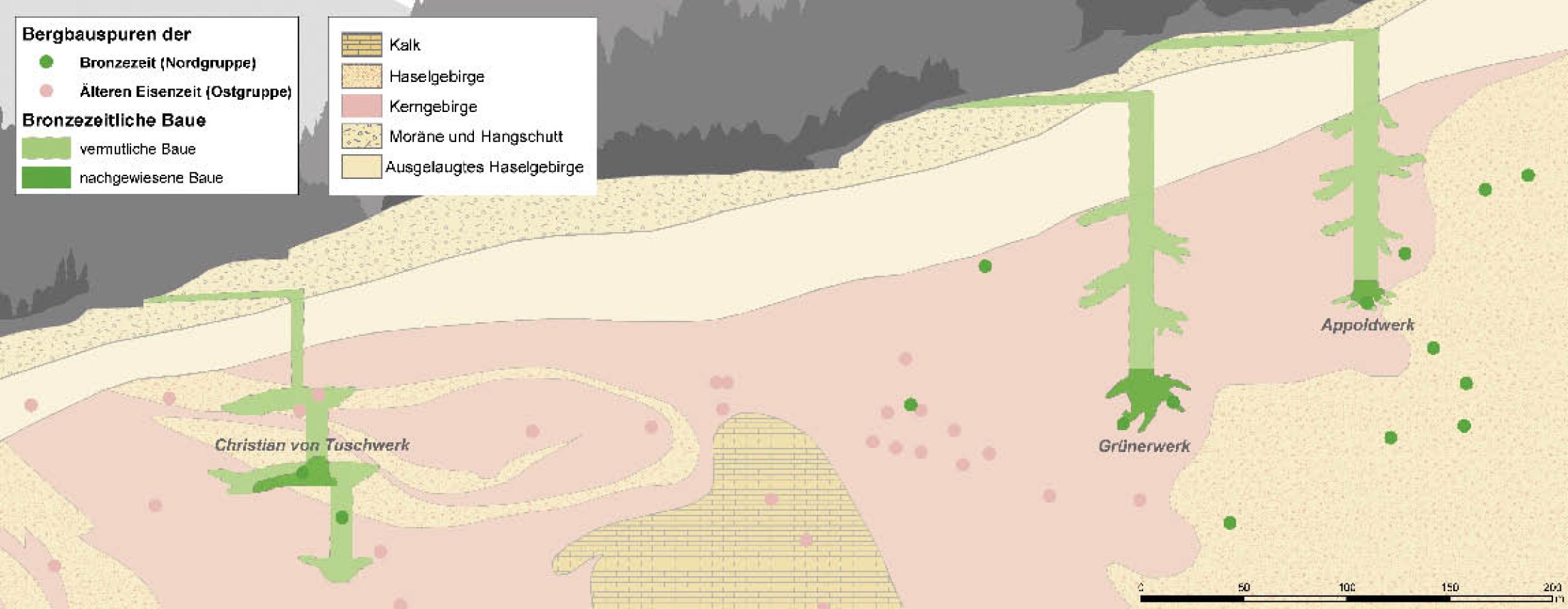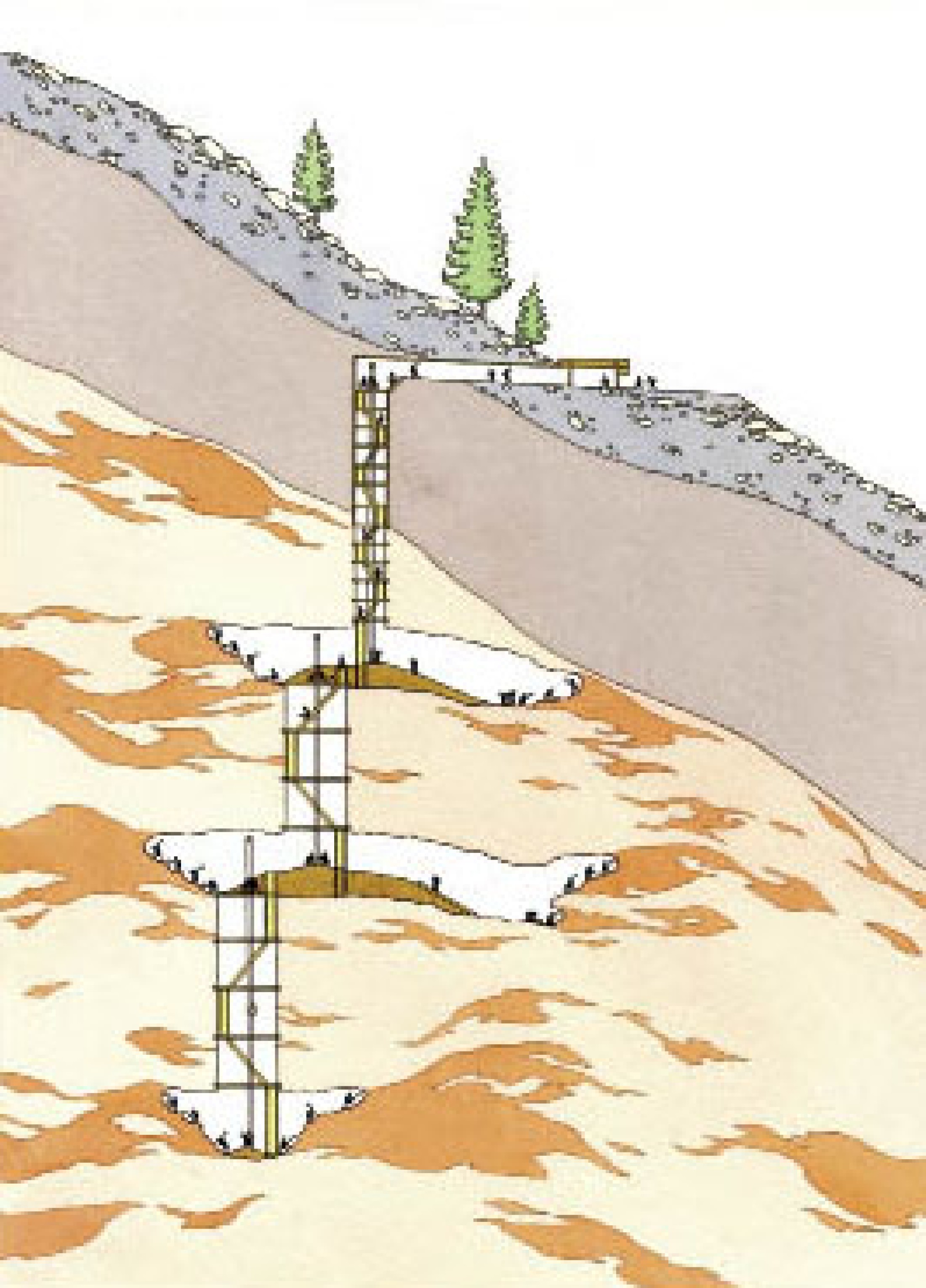Bronze Age mining facilities
Bronze Age mines were accessed via shafts and had pits which reached enormous dimensions. Three mines in particular contain traces of Bronze Age mining activity: Appoldwerk, Christian von Tuschwerk and Grünerwerk. Of these three mines, the Christian von Tuschwerk boasts a particularly rich array of finds including the famous Hallstatt staircase. The Grünerwerk mine’s shaft and a mining hall have been preserved in their original dimensions.Shaft structures
Excavations in the Christian von Tuschwerk mine
Finds from the Appoldwerk mine
Shaft and mining hall in the Grünerwerk mine
Shaft structures
All three of the Bronze Age mineworks involved the construction of vertical shafts. The targets were the extensive bands of concentrated or 'core' salt in the mountain. If the miners hit upon good exploitable rock salt, they would create mining galleries or chambers, some of huge dimensions. When the band of core salt was exhausted, another shaft was then driven down deeper into the mountain. The most obvious traces of Bronze Age activity have been found in the Appoldwerk, Christian von Tuschwerk and Grünerwerk mine zones. The remains of collapsed scaffolds were found in the Appoldwerk and in the Christian von Tuschwerk, with timbers piled up to a height of several metres in the shaft bottoms. It is not yet clear whether this happened during or after the period of operation of the Bronze Age mine.Excavations in the Christian von Tuschwerk mine
Since 1992, archaeological excavations have been carried out every year in the Christian von Tuschwerk. Modern excavation has only revealed the mid-level gallery as depicted here; however, finds made in the 18th and 19th centuries strongly suggest the existence of at another gallery one level above this, while historic records concerning the Heidengebirge imply that there may also be a lower level of gallery working too. The site has yielded a wealth of very significant finds, among them a rope of lime-tree bast as thick as an arm, pieces of thick woollen fabric, and several leather palm protectors (small hand leathers with a thumb hole) These finds identify the location as a former shaft base and loading point from which salt was hoisted upwards.Finds from the Appoldwerk mine
The Appoldwerk site was probably also relates to a shaft bottom. Large sinkholes on the surface indicate the entrances to the great pits.Shaft and mining hall in the Grünerwerk mine
The Grünerwerk, where the Bronze Age shaft – more than 3,500 years old – has been preserved in its original form, indicates the size of these shafts, while the Appoldwerk and the Christian von Tuschwerk only show the collapsed planking. The shaft preserved in the Grünerwerk has a cross-section of 23 m x 7 m and is filled with fine sediments. Interestingly, no traces of planking were discovered in this shaft section. Why were the shafts so wide? Narrower shafts could have been wholly adequate for hoisting salt, but not to allow for other aspects of salt mining such as the supply of new pit props, access for miners and, possibly, ventilation. And what about the mine galleries? Normally, the geological pressure quickly recloses all cavities; however, this was not the case with the prehistoric mining chambers in the Grünerwerk and the Christian von Tuschwerk. Both these galleries were filled with material that entered from above, including clay, rubble and tree roots.(Reschreiter, H. – Kowarik, K. – Loew, C.)




